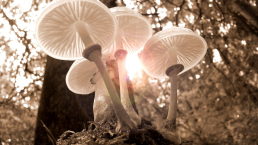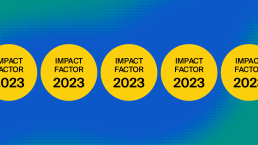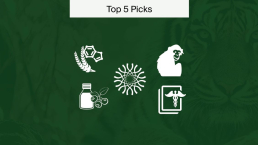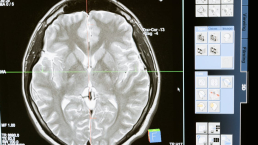
Romantic Love Activates the Brains’ Behavioral Activation System
Love can be all-consuming. And now, for the first time, scientists are beginning to get insights into what causes this phenomenon.
Researchers from the University of Canberra and the University of South Australia have conducted a study that measures how part of the brain is responsible for idolising loved ones during the honeymoon period of a romance. This is also referred to as romantic love, which often happens in the early stages of a romantic relationship. However, it can last from months to years, or in some cases, over decades. This is referred to as long-term romantic love. Which resembles romantic love, but it does not involve intrusive thinking or preoccupation.
It’s well known that romantic love can change the brain and change perception by altering brain chemistry. We know that the love hormone oxytocin causes feelings of euphoria when falling in love
But now scientists are starting to investigate the behavioral activation system (BAS) in the brain and how romantic love affects the system.
This article explores a recent novel study published in Behavioral Sciences that studies the BAS system in more detail. The study validates a new method to measure the intesity of romantic love. As well as providing the first evidence that BAS plays a role in romantic love.
Behavioral activation system (BAS)
The BAS rewards goal-oriented behaviors by releasing dopamine once individuals accomplish these goals or milestones. This activation system encourages individuals to work harder to achieve their goals. An example of this could be attending a gym session or exercise class.
The BAS system works on inputs and outputs; the inputs act as cues to meet goal-directed behaviors. The outputs include motor activity, energy, confidence, interest, and pleasure in rewards.
BAS in romantic love
A heightened BAS has been linked to people who are experiencing romantic love. Their emotions and behaviors demonstrate this, reflecting the hallmarks of heightened BAS sensitivity, such as increased reward valuation and a willingness to expend effort to gain reward.
Interestingly, people experiencing romantic love demonstrate an increased reward valuation for the loved one. Furthermore, romantic love can mesmerize people, leading them to idealize their loved one, perceive them as the ideal partner, and make them the most important person in their lives.
This can result in a variety of behaviors, including reordering priorities to make themselves more available to their loved ones. In addition, in some relationships, people may change their personal style, such as clothing, taste in music, mannerisms, habits, and values, to appear more attractive.
Measuring BAS
One can measure BAS sensitivity. It’s a useful tool for the treatment and management of mental health illnesses such as depression. Researchers use it to understand and treat addiction.
It can be measured using the BAS scale, first validated in 1994. As well as the behavioral inhibition scale (BIS) developed by Carver and White. The BAS scale comprises three subscales: reward, drive, and fun-seeking. The reward subscale accesses the tendency to respond to rewards with energy and enthusiasm. In addition, the drive subscale assesses the motivation to pursue goals. The fun-seeking subscale assesses the likelihood of pursuing positive experiences without regarding potential threats or costs. The scale is made up of a set of questions within the subscales, and the participant is encouraged to respond using a four-point scale, e.g., 1 = very true for me; 4 = very false for me.
How romantic love affects BAS sensitivity
Researchers from the University of Canberra and the University of South Australia amended the BAS scale to assess how romantic love affects BAS sensitivity. They conducted two studies; the first assessed BAS sensitivity to a loved one (BAS-SLO).
This involved amending the BAS scale and the questions that researchers usually ask participants to assess their own BAS sensitivity. In this case, researchers amended the questions to assess BAS sensitivity towards a loved one. For example, when I’m doing well at something, I love to keep at it, which was changed to When I’m doing well at something my partner values, I love to keep at it.
The researchers also used the Passionate Low Scale (PLS-30) to assess the validity of the BAS-SLO. Researchers commonly use the PLS-30 as a measure of romantic love in biological studies. It’s a similar system to the BAS scale but has 30 items that measure the cognitive, emotional, and behavioral characteristics. Participants are encouraged to answer on a scale of 1–9, e.g., 1= not at all true and 9 = definitely true.
The researchers conducted the second study to test the hypothesis that the BAS-SLO scale will show a positive association with the intensity of romantic love.
BAS-SLO scales positive associations with romantic love
The researchers performed hierarchical linear regression, using the BAS-SLO scale to predict PLS-30. To accomplish this, they identified some controls associated with romantic love.
Some suggest that females experience romantic love more intensely than males. Because of this one of the controls asks, “What is your biological sex?”. Another important consideration is the length of time the individual has been in love. The length of time an individual has been in love affects the intensity of love.
Obsessive thoughts are also an important consideration, as they are a hallmark and biological component of early-stage romantic love. Increased cortisol levels cause a decrease in serotonin levels, resulting in intrusive thoughts. The participants were asked, “What percentage of your waking hours do you spend thinking about the person you love?”. The researchers recorded the responses on a scale from 0 to 100%.
Finally, the researchers measured commitment. Romantic love is associated with commitment and therefore thought to have a direct association with love intensity. The researchers measured commitment using the Triangular Love Scale commitment subscale. The participants were asked to answer on a scale from 1 to 9, e.g., 1 = not at all and 9 =extremely.
Results
The researchers validated the BAS-SLO scale. They determined that it was sufficient enough to justify its use in future psychological and imaging studies. Furthermore, the second study confirmed the researcher’s hypothesis that BAS sensitivity to a loved one would positively associate with the intensity of romantic love.
The BAS-SLO scale explained 8.89% of the variance in the intensity of romantic love. This confirmed that the BAS-SLO scale could be useful in investigating romantic love. Furthermore, it provided the first evidence that BAS plays a role in romantic love. In addition, future studies may be able to build on these results and identify the unique components of romantic love caused by the BAS. As well as its state of sensitivity to a loved one.
The researchers also conclude that future studies could also use the BAS-SLO scale to predict individual features of the intensity of love.
Future research
If you would like to read more research in this area or, alternatively, if you would like to submit your own research, please see the Behavioral Sciences Special Issue: “Advances in the Science of Mating, Love, and Attachment in Romantic Relationships” for more information.
Or, if you’re interested in reading more about testing natural behaviors, see our recent article on Testing Octopus Intelligence and Behaviors.










